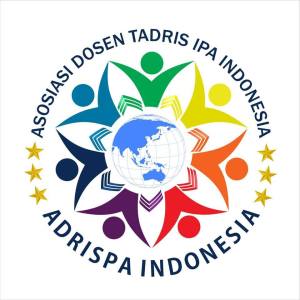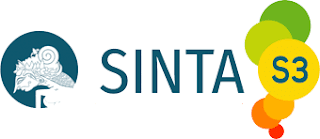DEVELOPMENT OF SIGIL-BASED ADDITIVES AND ADDICTIVE SUBSTANCES TEACHING CHART FOR JUNIOR HIGH SCHOOL STUDENTS: ALTERNATIVE LEARNING RESOURCES DURING A PANDEMIC
DOI:
https://doi.org/10.21154/insecta.v2i1.2464Keywords:
Teaching Materials, Sigil Additive, Additive Substance, EfficientAbstract
Research and development of sigil-based teaching materials based on facts in yhe field, namely students rarely read textbooks in printed form because the display is less attractive, additive and addictive substances have not been delivered as a whole so thaht astudents miss lessons and lack insight. When in class students tend not to play attention because the learning used by teachers is often convensional and rarely uses media. Teaching materials are needed by students in learning activities that can be used anytime and anywhere so that learning activities can be efficient. The purpose of the study was to describe the results of validation and student responses to sigil-based teaching materials for junior high schools. This type of research is the research and development of R&D (Research and development). The development model in this study uses a model developed by Thiagarajan 4-D. The product that has been developed is then validated by 2 (two) lecturers from the Faculty of Tarbiyah and teacher Training consisting of material experts and media experts as well as one science teacher of SMP Plus Darus Shlolah as user expert. After being validated, the product is then field tested to determine student responses. The results of the materials expert assessment are 98.75%, 91.42% media expert and 92.30% user expert, all three have a high percentage so that the developed digital teaching material has the criteria of “very valid”. The small-scale trial results showed a percentage of 78.4% so they included the criteria of “interesting”. Large-scale trial results the percentage of results is 83.3% so it includes the criteria of “very interesting”.References
Abidin., & Rohati. (2014). Development of Interactive Mathematics Learning Media Based on Android to Foster Learning Motivation for Dyslexic Children on Exponential Materials in Jambi City. Edumatica 4( 2), ISSN 2088-2157, 68.
Adityo susilo, et. Al. (Maret 2020). Coronavirus Disease 2019: Recent Literature Review. Indonesia Journal of internal Medicine, 7(1), 45.
Akbar, S. (2013). Instrument Learning Device: PT. Remaja Rosdakarya, 34.
Darma., S., & Iswendi. (2018). Development of the Ludo Word Game (LWG) Chemistry as a Learning Medium for Additive and addictive Materials for Class VIII SMP. XII(12), 81.
Jannah, N., Fadiawati, N., & Tania, L. (2017). Development of an Interactive E-Book Based on the Phenomenon of Everyday Life About Mixed Separation. Journal of Chemistry Education and Learning, 6(1), 186-198.
Mundir. (2013). Educational Statistics: Introduction to Data Analysis for Thesis & Thesis Writing. Jember: STAIN Jember Press, 4.
Nafi’ah, U., & Utami, I, W, J. (2017). Development of sigil based e-book as media for “technology and information for history learning” course. Universitas Negeri Malang. Malang. Historical studies Journal No 27(1).
Nasution, Education Technology, ( Jakarta: Bumi Aksara, 2010), 103.
Nopriadi., Darlius., & Syofi’I., I. (2016). Development of Electronic Module-Based Teaching Materials in Vehicle Body Construction Subjects in the 2015 Sriwijaya University Mechanical Engineering Education Study Program. Journa; of Mechanical Engineering Education, 3( 2), 127.
Sahlan. (2015). Learning Evalucation: A Practial Guide for Educators and Prospective Educators. Jember: STAIN Jember Press, 121.
Sofyan., G., J., & Listiawan., T. (2019). Development of Digital Books on Communication materials in Simulation and Digital Communication Subject Network for Class XI SMK Perwari Tulungagung . JOEICT, 3(1), 59.
Sugiono. (2014). Educational Research Methods with Quanttative, Qualitative, and R&D approaches. Bandung: Alfabeta, 407.
Sutarti., T., & Irawan., E. (2017). Tips for Success in Receiving Development Research Grants. Yogjakarta: Deepublish, 13-14.
Suyono., & Nurohman S. (Mei 2014). WEB-Based Electronic Module Development as a Physics Learning Media. Educational Journal, 44(1),73.
Wirasasmita., R., H., & Uska., M., Z. (Juni 2017). Development of Learning Media Based on Electronic Digital Books (EBUB) using Sigil Software in Basic Programming Courses. Journal Informatics education, 1(1).
Wonoraharjo Surjani. (2011). Basic Science. Jakarta: PT Indeks, 14.
Yusnimar, (2014). E-Book and University library Users in Jakarta. Al-Maktabah, 13(1), 34-39.








